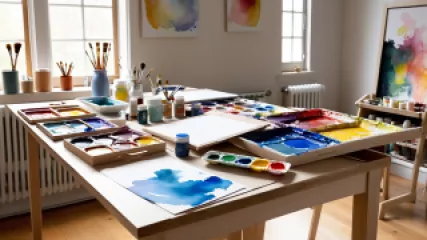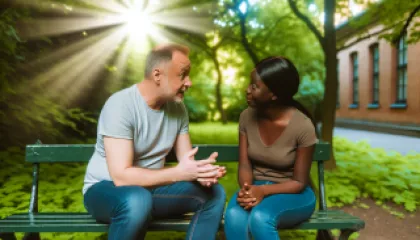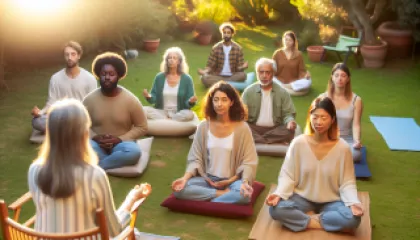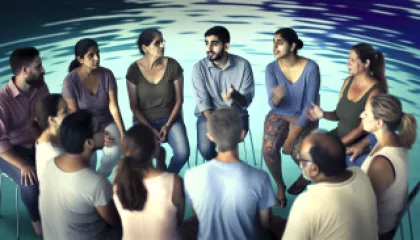Expressive Art Therapy: A Step-by-Step Guide
Art has long been recognized as a powerful tool for self-expression and healing. It allows individuals to tap into their emotions, explore their thoughts, and find solace in the creative process. Expressive art therapy is a form of therapy that harnesses the transformative power of art to promote mental health and well-being. In this step-by-step guide, we will explore the principles of expressive art therapy and provide practical techniques for using art as a form of therapy.
What is Expressive Art Therapy?
Expressive art therapy is a therapeutic approach that encourages individuals to use various art forms, such as painting, drawing, sculpting, and collage, as a means of expression and communication. It recognizes that the process of creating art can be healing in itself and aims to facilitate self-discovery, emotional release, and personal growth.
Unlike traditional talk therapy, expressive art therapy does not rely solely on verbal communication. Instead, it invites individuals to engage with art materials and explore their inner world through the creative process. By bypassing language barriers, this form of therapy allows individuals to access deeper emotions and insights that may be difficult to articulate verbally.
The Benefits of Expressive Art Therapy
Expressive art therapy offers a range of benefits for individuals seeking support for their mental health and well-being. Some of the key benefits include:
- Emotional Release: Art provides a safe space for individuals to express and release emotions that may be difficult to put into words.
- Self-Exploration: Through art-making, individuals can gain deeper insights into themselves, their experiences, and their inner world.
- Stress Reduction: Engaging in art can help reduce stress levels by promoting relaxation and providing a healthy outlet for emotional expression.
- Self-Confidence: Creating art and witnessing one's own creative abilities can boost self-esteem and foster a sense of accomplishment.
- Communication: Art can serve as a non-verbal form of communication, allowing individuals to express themselves when words fail.
- Personal Growth: The process of engaging in art therapy can lead to personal growth, increased self-awareness, and a deeper understanding of oneself.
Getting Started with Expressive Art Therapy
Embarking on your expressive art therapy journey doesn't require any prior artistic experience or expertise. The focus is not on creating a masterpiece but on the process of self-expression and exploration. Here are some steps to get started:
Step 1: Create a Safe Space
Find a quiet and comfortable space where you can engage in art-making without distractions. Set the mood by playing calming music, lighting candles, or surrounding yourself with objects that bring you joy and inspiration.
Step 2: Gather Art Materials
Collect a variety of art materials that resonate with you. This may include paints, brushes, pencils, markers, paper, canvas, clay, or any other medium that sparks your interest. Having a wide range of materials allows for greater exploration and experimentation.
Step 3: Set an Intention
Before you begin creating, take a moment to reflect on what you hope to gain from your art-making session. Set an intention for your practice, whether it's to release emotions, gain clarity, or simply enjoy the process of creating.
Step 4: Follow Your Intuition
Allow your intuition to guide you as you select art materials and begin creating. Let go of any expectations or judgments, and allow yourself to explore freely without worrying about the end result. Focus on the process rather than the outcome.
Step 5: Engage with the Art
As you create, pay attention to how the art-making process feels in your body. Notice any emotions, sensations, or thoughts that arise. Allow the art to speak to you and guide your creative choices.
Step 6: Reflect and Process
Once you have completed your artwork, take some time to reflect on what emerged during the process. Observe any symbols, colors, or themes that appear in your work. Consider writing in a journal or discussing your artwork with a trusted friend or therapist to gain further insights.
Additional Techniques for Expressive Art Therapy
In addition to the general steps outlined above, there are specific techniques within expressive art therapy that you can explore. Here are a few examples:
1. Collage Therapy
Create a collage using images, words, and textures from magazines, newspapers, or personal photographs. Arrange the materials intuitively, allowing the images to tell a story or evoke certain emotions.
2. Guided Drawing
Follow a guided drawing exercise that focuses on specific themes or emotions. For example, draw your inner critic or visualize your ideal self. Allow the imagery to unfold naturally as you engage with the exercise.
3. Body Mapping
Trace your body outline on a large piece of paper and use different art materials to fill in the outline. Pay attention to how different parts of your body feel and express those sensations through color, texture, or symbols.
4. Mandala Creation
Create a mandala, a circular design that represents wholeness and balance. Start from the center and work your way outward, allowing the mandala to evolve organically. Focus on repetitive patterns and colors that resonate with you.
Conclusion
Expressive art therapy is a powerful tool for self-expression and healing. By engaging in the creative process, individuals can tap into their emotions, explore their thoughts, and find solace in the transformative power of art. Whether you're a seasoned artist or a complete beginner, expressive art therapy offers a unique and accessible approach to supporting mental health and well-being. So grab some art materials, create a safe space, and embark on your own expressive art therapy journey today.






